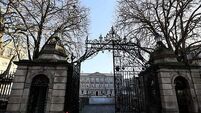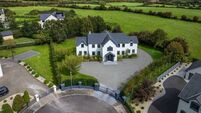House prices surging to Celtic Tiger peaks

While their respective house price reports summarising results for 2017 and making predictions for this year have slightly varying figures, both Daft.ie and MyHome.ie agree that there will be a continued surge in price inflation in 2018.
In the Daft.ie report Ronan Lyons, assistant economics professor at Trinity College Dublin, said the substantial increase in house prices over the last four years meant that in a number of parts of the country, prices are now “within a year or two of reaching their 2007 peak” though he added that they are predominantly urban areas.
“Outside the main cities and the Greater Dublin Area, the typical region has prices that are still 45% below peak values,” he said.
While many of those closest to their Celtic Tiger level are in Dublin, there are exceptions, including Ballincollig in Co Cork, which is within 22% and Limerick City North which is within 20% of its peak.
Sandycove in Dublin is within 10% according to Mr Lyons.
“The peak of the Celtic Tiger housing bubble is not, of course, a target,” Mr Lyons said.
“Apart from those in negative equity, there is little reason to cheer prices as they rise year on year.
“What the bigger picture price trends tell us is that housing demand is focused in and around cities. Contrary to some of the political debate in Ireland, this is far from unhealthy.
“What is unhealthy is trying to impose a non-urbanised housing market on an urbanised labour market. Ireland is the least urbanised country in Europe – but this just makes it late, not different.”

Daft’s prediction for 2018 is that house prices nationally will rise by 5.7% which, it said, was the second highest reading since the series started in 2011.
“In Dublin, expected inflation over the next year is currently 7.8%, up from 3.5% two years ago.”
MyHome.ie’s prediction is that the pace of increase will be slower in 2018 due to a tightening of the Central Bank lending rules.
“Looking ahead to 2018, we still expect a robust pace of house price inflation close to 8%,” said the author of the report, Conall MacCoille, Chief Economist at Davy.
“However, the pattern of house prices we had seen up to 2017 is likely to be re-established. Double-digit price gains are still likely outside the capital, where the recovery began later, prices are cheaper and there is still scope for leverage on mortgage lending to rise.
Dublin should see a more sedate mid-single-digit gain, similar to the 6.6% rise recorded through 2016.”
He said rising house prices have now dragged all but 9% of owner-occupiers out of negative equity, a stark improvement from the 36% at end-2012.
“With greater equity in their homes, more Irish households will seek to move home, helping housing market activity,” he said.
In his synopsis in the Daft.ie report, Ronan Lyons said as Ireland goes from 65% urban to 80% or 85% over coming decades, it will create additional demand for housing around major cities.
“If we as a country get that wrong, we will be stuck in a sprawl model, with implications for family life and environmental sustainability, as well as for the housing market,” he said.
“In 2018, work will get underway on implementing the National Planning Framework, which is supposed to put in place the foundations for Ireland to grow over the next two decades. Here’s hoping the Framework gets it right. Otherwise, there could be many more years of housing market angst ahead.”












